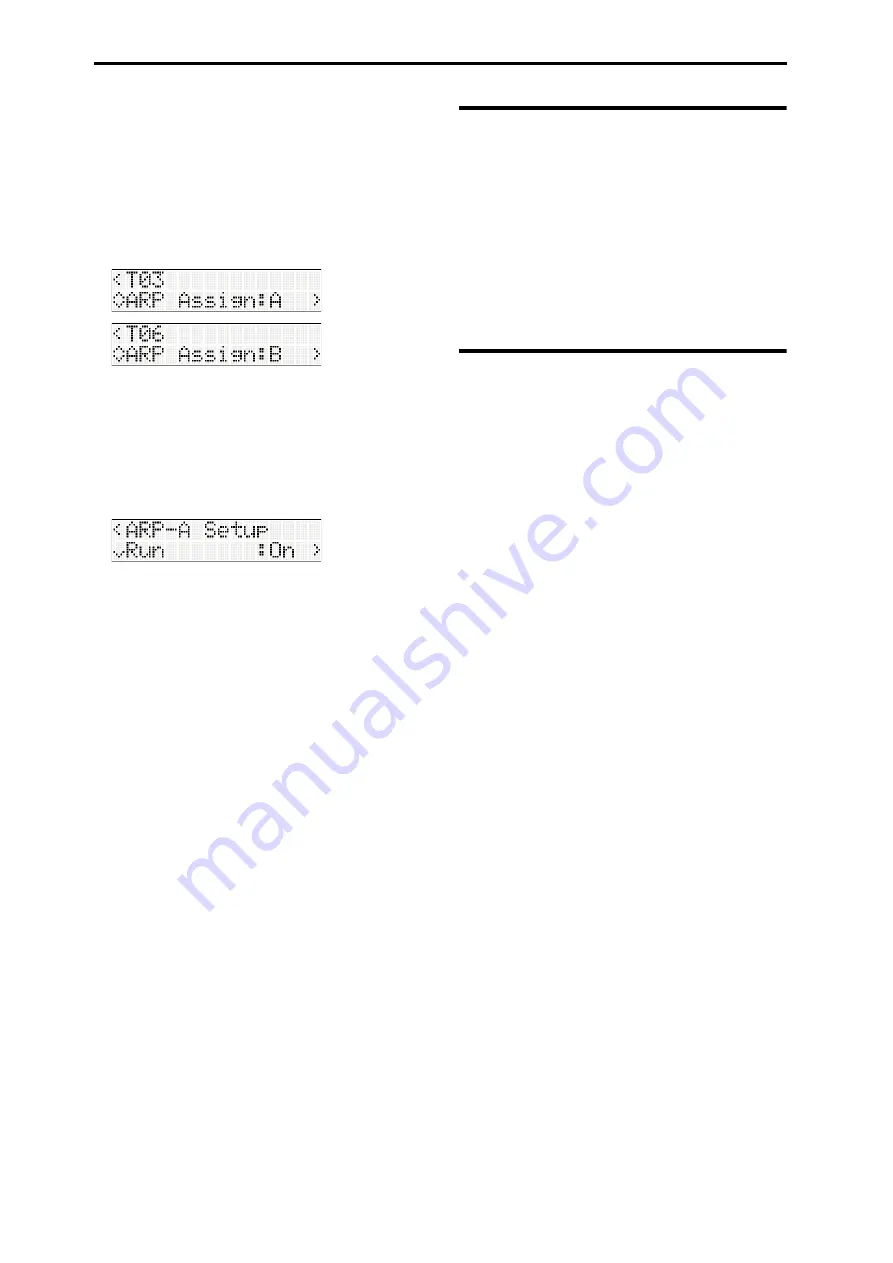
Arpeggiator function
54
Checking the structure of a user arpeggio
pattern
Let’s
take
a
look
at
how
the
combination
“Category:
BASS
&
BASS
SPLIT
039:
[<Moon
Jam>]”
is
structured.
• Select
combination
Category:
BASS&BASS
SPLIT
039:
[<Moon
Jam>]
• Look
at
the
“ARP
Assign”
settings;
notice
that
arpeggiator
A
is
assigned
to
timbre
3,
and
arpeggiator
B
is
assigned
to
timbres
6
and
7.
When
you
play
the
keyboard,
arpeggiator
B
will
play
the
program
of
timbre
6.
(Timbre
7
is
a
dummy
timbre
used
to
play
timbre
6.
PG
p. 24)
Arpeggiator
A
will
play
the
program
of
timbre
3.
• If
you
turn
“Run”
Off
for
A
or
B,
the
arpeggiator
that
is
turned
off
will
stop.
When
you
turn
it
On
again
and
play
the
keyboard,
the
arpeggiator
will
run.
• Take
a
look
at
COMBI
EDIT:
Arpeggiator
‐
Arp
‐
A
Setup
and
Arp
‐
B
Setup
parameters
“Top
Key”
and
“Bottom
Key”;
note
that
arpeggiator
A
and
B
are
triggered
by
keys
C4
and
above.
Linking the arpeggiator to
program, combinations
You
can
specify
whether
or
not
the
arpeggiator
settings
that
are
written
in
a
program
or
combination
will
change
when
you
switch
programs
or
combinations.
With
the
factory
settings,
the
former
is
selected.
Use
the
latter
when
you
want
to
keep
the
same
arpeggio
pattern
running,
and
change
only
the
program
sound.
This
setting
is
made
in
“Load
ARP”
(GLOBAL/
MEDIA:
Basic–ARP).
(
PG
p. 59)
Arpeggiator synchronization
For
details
on
synchronization
between
arpeggiators
A
and
B,
and
synchronization
between
the
arpeggiators
and
sequencer
in
Sequencer
mode,
please
see
PG
p. 203.
Содержание microSTATION
Страница 1: ...2 E Operation guide ...
Страница 79: ...MIDI Implementation Chart Operating requirements 75 ...















































